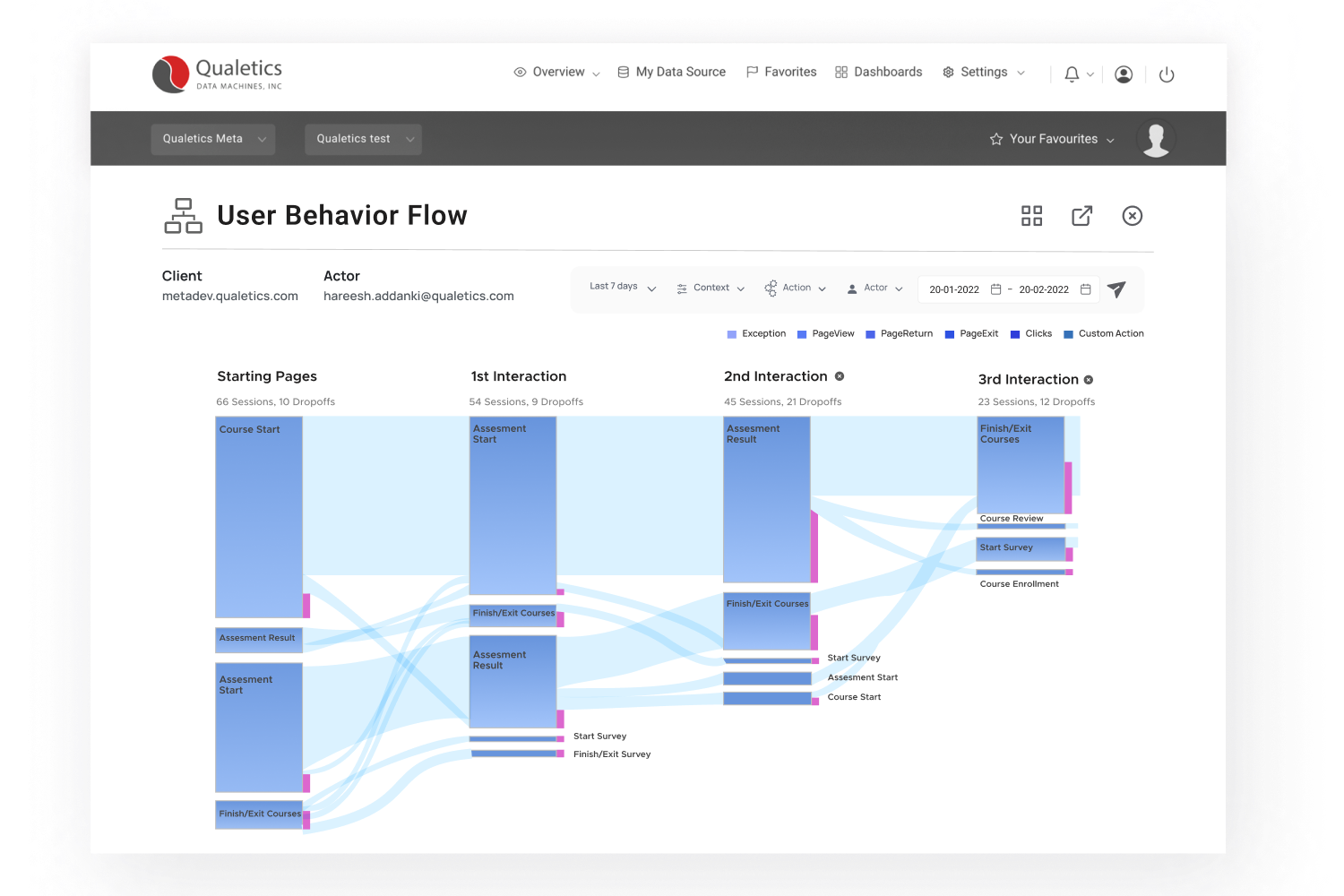Effect Change by Understanding User Behavior
Software applications are a combination of actions performed under different contexts by users with different characteristics influenced by their desire to reach different outcomes.
What the above translates into is a complex knowledge graph with the Context and Actors playing the role of the Object and Subject with the Action indicating the Predicate, representing a semantic network of entities and their various relationships with each other.
Take an example of a subscription-based eCommerce store where users sign up to receive discounted products for sale.

A user could be performing an action of buying a product recommended by the “Top Products” page leading to a successful outcome. Another user could be canceling their subscription after not having a satisfactory experience using the product. In the case of cancellation, the user headed towards cancellation from the Search feature.
Both these scenarios are important as one represents an outcome that should be nurtured to continue driving more engagement from the users whereas other where the driving factors that led the user to cancel their subscription need to be identified and mitigated to prevent further churn.
This is a fairly common situation with software products where not every user action can be anticipated at the time of design and build of the software application. The advantage of a software product is that it can be released without fully satisfying all of the feature functionality that is possible with the intention that features can be added, removed, or enhanced based on feedback from users.
However, not all users provide feedback or have the patience to provide feedback and await changes to be implemented. “Fail Fast & Fail Often” does not work if the tools to observe and react are not in place for software teams to embrace and enforce change. The question is, does your software team have such a tool?
This is where an insight that can help you understand the journey of the users in a software application becomes extremely useful. Qualetics provides many insights that can help understand this and one such insight is the User Behavior Flow insight.
The below insight represents the activity flow in a blogging platform where users can publish posts or engage with posts.

With the User Behavior flow, the insight is presented to show a linear flow of events occurring in your software application in a given time frame. This sequence of events can be segmented by user profiles to give you an understanding of how certain types of users interact with your application or achieve different goals.
On the other hand, this insight also allows you to identify conversion for a specific Context and Action that you are interested to understand as a product owner. This conversion would show the Goal with the preceding step leading to the goal and the succeeding step resulting from the goal.
Both the linear flow of events with the ability to segment by various filters and the conversion flow are powerful tools that allow product and software teams to fully understand how users are navigating in their apps and what actions are driving towards successful or unsuccessful outcomes that product owners need to monitor.